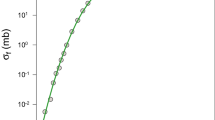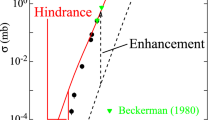Abstract:
The electron-screening acceleration of laboratory fusion reactions at astrophysical energies is an unsolved problem of great importance to astrophysics. That effect is modeled here by considering the fusion of hydrogen-like atoms whose electron probability density is used in Poisson's equation in order to derive the corresponding screened Coulomb potential energy. That way atomic excitations and deformations of the fusing atoms can be taken into account. Those potentials are then treated semiclassically in order to obtain the screening (accelerating) factor of the reaction. By means of the proposed model the effect of a superstrong magnetic field on laboratory hydrogen fusion reactions is investigated here for the first time showing that, despite the considerable increase in the cross-section of the dd reaction, the pp reaction is still too slow to justify experimentation. The proposed model is finally applied on the H2 d, pH3 fusion reaction describing satisfactorily the experimental data although some ambiguity remains regarding the molecular nature of the deuteron target. Notably, the present method gives a sufficiently high screening energy for hydrogen fusion reactions so that the take-away energy of the spectator nucleus can also be taken into account.
Similar content being viewed by others
Author information
Authors and Affiliations
Additional information
Received: 19 May 2000 / Accepted: 4 September 2000
Rights and permissions
About this article
Cite this article
Liolios, T. Screened Coulomb potentials for astrophysical nuclear fusion reactions. Eur Phys J A 9, 287–292 (2000). https://doi.org/10.1007/s100500070046
Issue Date:
DOI: https://doi.org/10.1007/s100500070046




